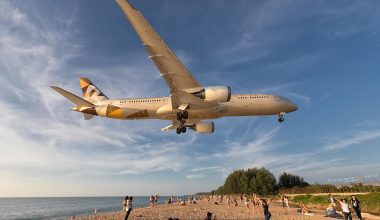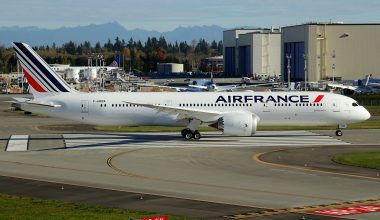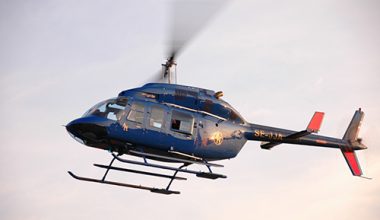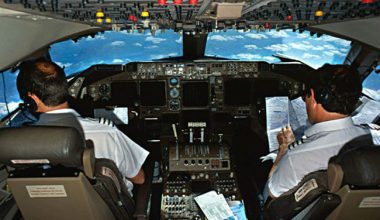A group of 11 team members of technical experts and engineers from the European aircraft manufacturer Airbus has reached Jinnah International Airport today from France to assist the committee constituted by the Government Pakistani to probe Pakistan International Airlines doomed A320 Flight ‘PK8303’ aircraft crash that took place on Friday, May 22.
The aircraft on its way from Lahore to Karachi carrying 91 passengers and 8 crew members had crashed a minute before landing at Jinnah International Airport in Karachi killing 97 people onboard.
According to Civil Aviation Authority of Pakistan (CAAP), the team will visit the plane crash site in Model Colony and also interview the survivors and eyewitnesses to assist the investigation committee to reach a conclusion whether it was a technical fault, an accident or pilot error that caused the catastrophic air disaster in the country’s recent history.
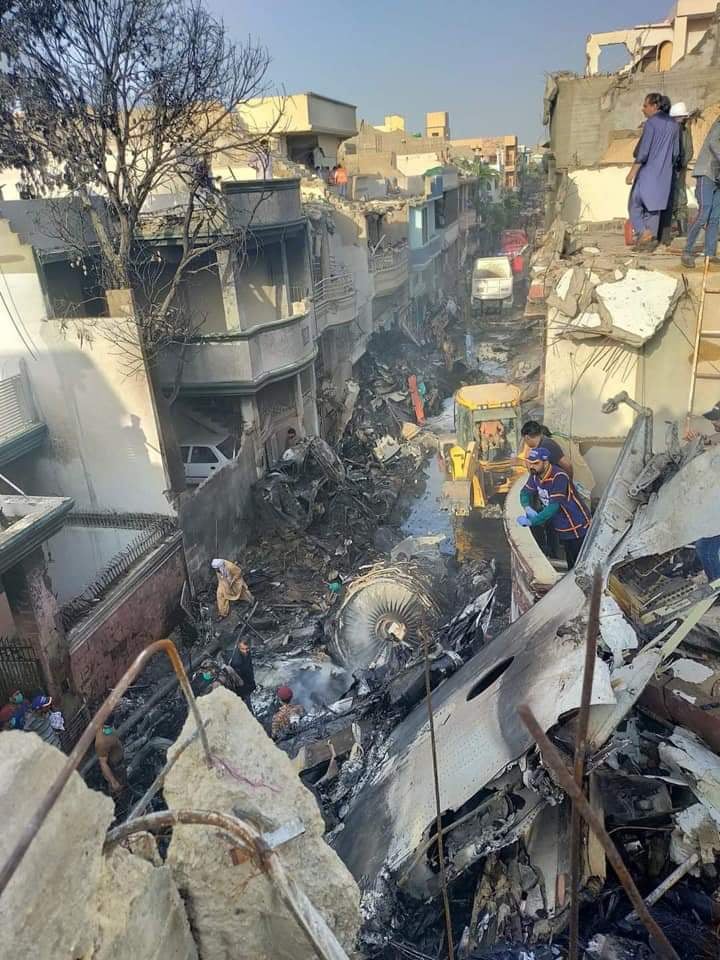
The Airbus experts are expected to take the aircraft’s black box recorder which contains the flight data recorder and cockpit voice recorder and any other evidence that would help with the investigation.
The team will fly back to France at 10 P.M. tonight after 16-hours of investigation.
Two survivors
The two survivors; a banker and a local resident had miraculously escaped death as they along with their seats were thrown out of the plane when it exploded in the air and fell on a residential colony close to the airport.
Rescue work, operation cleanup on halt
Before the arrival of the team, the rescue work and cleanup activity of removing various parts of the doomed plane’s engine and other objects were halted.
The team will conduct a thorough inspection of the site as well as the engine and black box.
Earlier, the company on its official twitter account had announced it would provide assistance to the investigators: “We regret to confirm that an A320 operated by Pakistan International Airline was involved in an accident during flight ‘PK-8303’ from Lahore to Karachi on May 22, 2020. Our thoughts are with all those affected. Airbus is providing assistance to the investigation.”
47,100 hours of flight.
According to the company’s record, the aircraft was handed over to the PIA in 2014 and had completed 47,100 flight hours and 25,860 flight cycles until its crash, it added.
Questions over pilot’s handling of aircraft
Meanwhile, a preliminary report prepared by the CAA raises serious questions over the pilot’s handling of the aircraft.
Whether it was his error of judgment, a bird-hit accident or technical fault in the airplane needs to be thoroughly probed, says the report.
The plane’s engines had hit the runway a number of times when the pilot was landing it but after the third hit, he had to lift it up owing to its high speed and unstable condition.
24-year flying experience
The pilot of the plane, Captain Sajjad Gul, had a distinguished 24-year career in the airline industry: 17,000 hours of flying planes and 4,700 hours of flying A320 Airbus.
A CAA local team also visited the runway and observed three marks where the plane had hit the ground. According to officials from Pakistan’s Civil Aviation Authority (CAA), complications had arisen during the aircraft’s first descent. The landing gear was still in the retracted position when the aircraft attempted its first landing. Friction marks on the runway suggested there had been some ground contact; at the runway’s 1,400-metre (4,500 ft) mark, the plane’s left engine is believed to have scraped the runway, while at the 1,700-metre (5,500 ft) mark, the right engine made contact. When the pilot went around, it is believed damage had already been caused to the engines from this contact, leading to engine failure mid-air. This, in turn, made it impossible for the aircraft to maintain altitude, causing it to crash during its return to the airfield. This is supported by the conversation between the aircraft and the air traffic control that the aircraft was constantly losing altitude. Observers noted that the plane’s backup Ram Air Turbine (RAT) was engaged, the purpose of which is to supply power to the aircraft control systems when both engines have failed.
However, though the engines touched the ground, the aircraft’s belly at no point made any contact with the runway, he said.
It was after the third contact with the runway that the pilot took off and perhaps thinking it better to take a round in the air and make another attempt. The air control room meanwhile kept reminding him to take the aircraft to 3,000 feet, but he managed only 1,800. This failure to achieve the directed height indicates that the engines were not responding, it was pointed out in the report.

